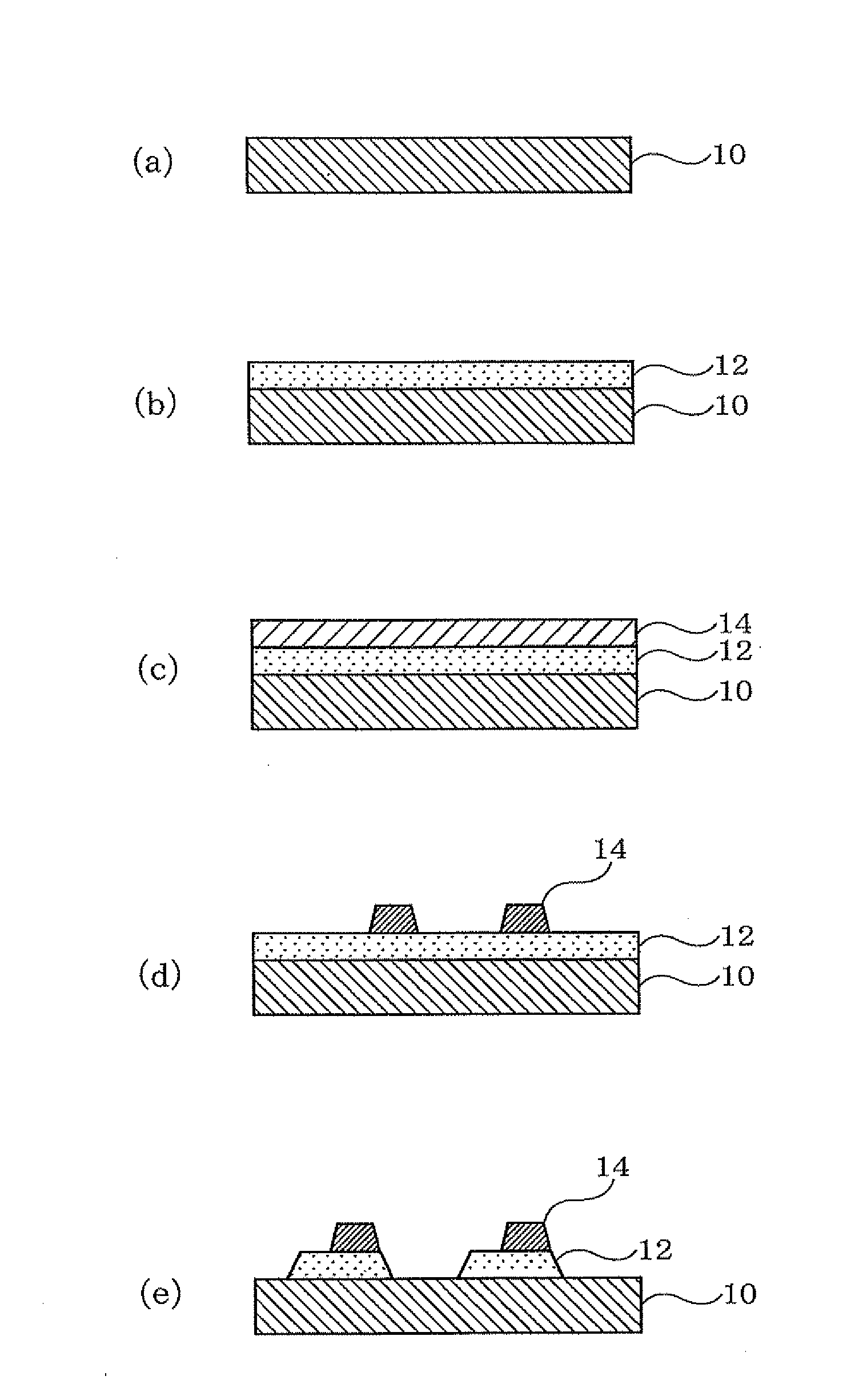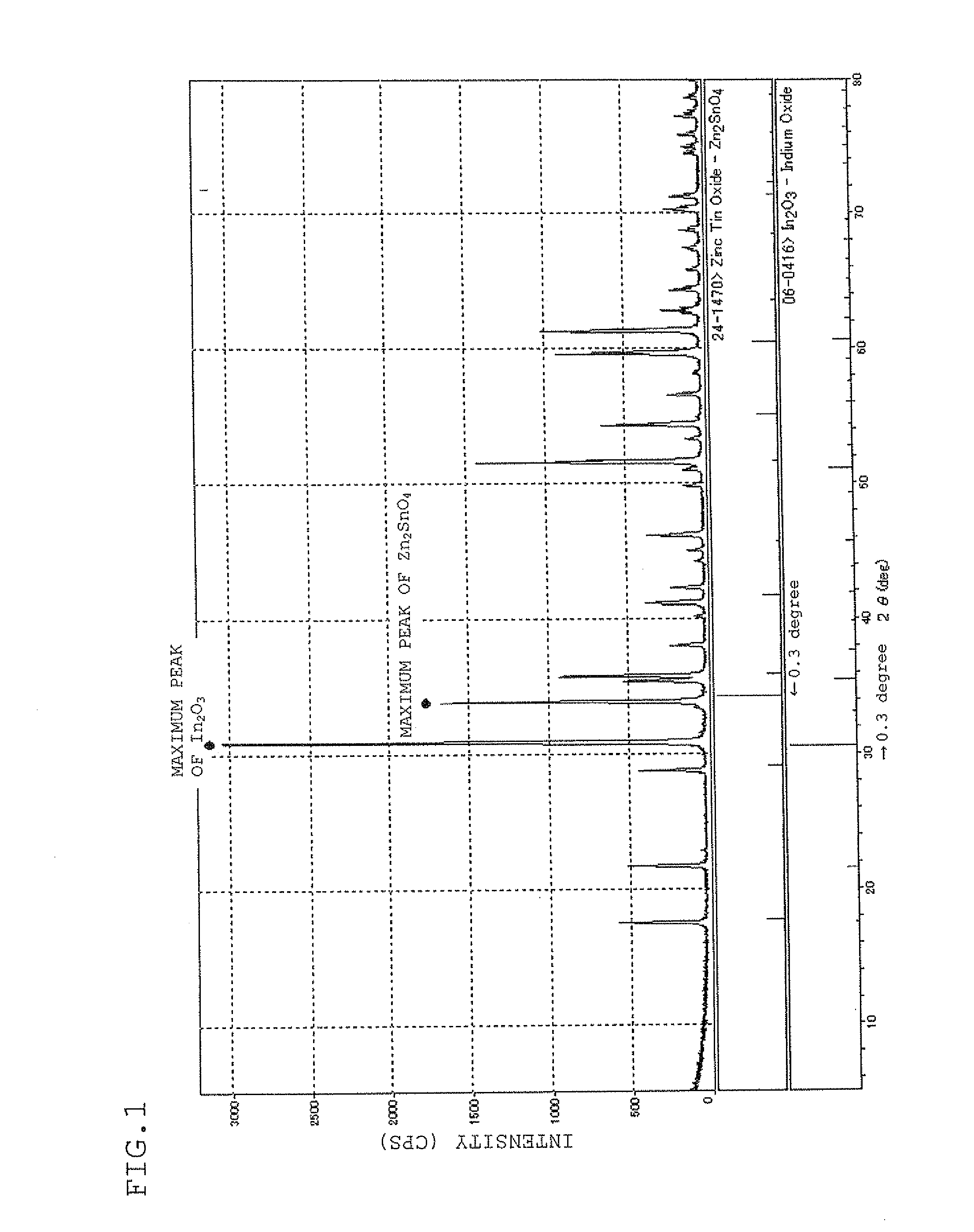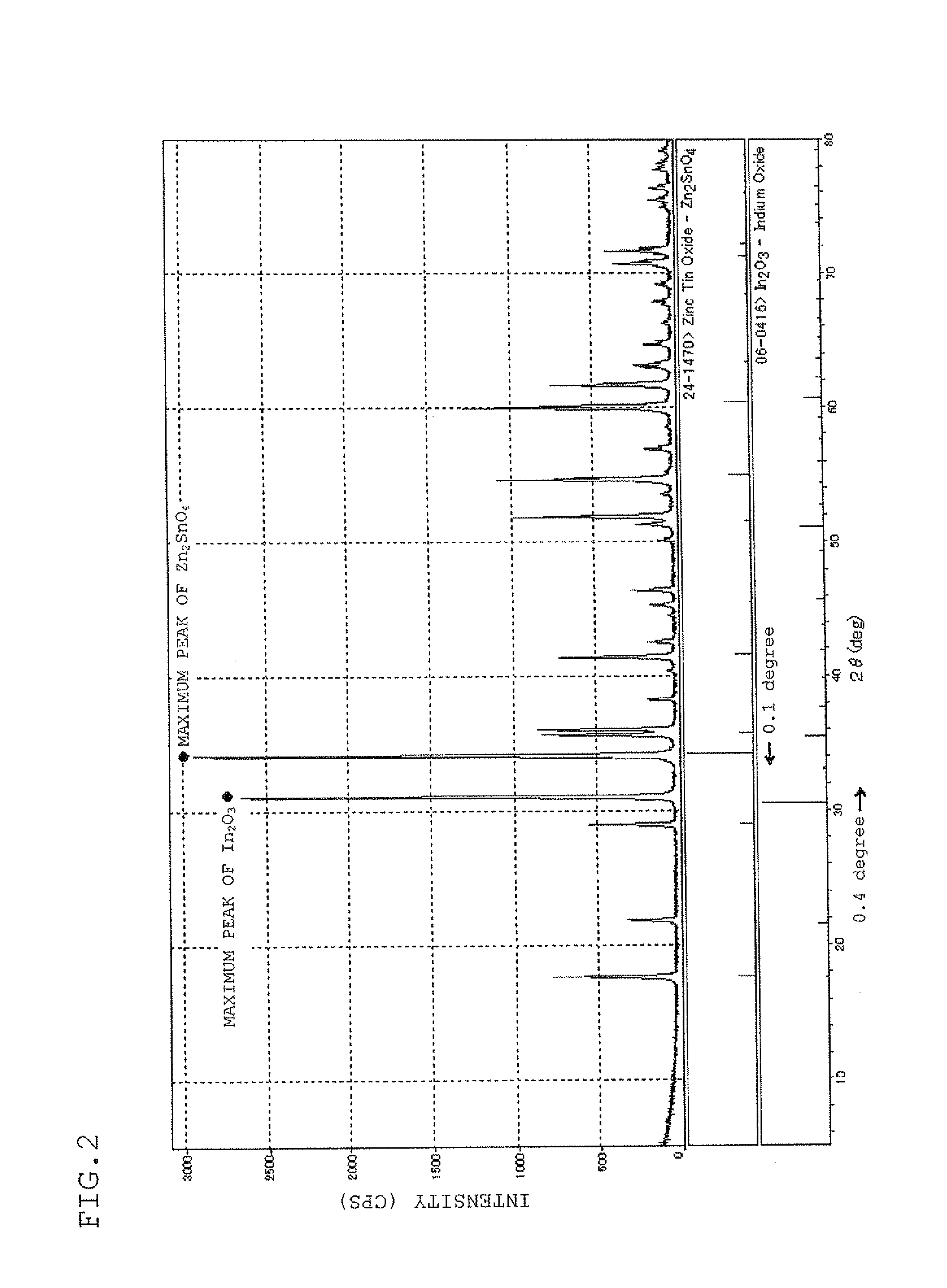Sputtering target, transparent conductive film and transparent electrode
a technology of conductive film and electrode, applied in the direction of conductive materials, conductive materials, cable/conductor manufacturing, etc., can solve the problems of reducing the content of indium in ito, retarding the film forming speed, and difficult to reduce the content of indium to 90 atomic percent or less, etc., to achieve the effect of reducing the content of indium, etching properties, and improving the conductivity
- Summary
- Abstract
- Description
- Claims
- Application Information
AI Technical Summary
Benefits of technology
Problems solved by technology
Method used
Image
Examples
example 1
(1) Production and Evaluation of Sputtering Target
(i) Production of Target
[0301]As raw materials for the target, indium oxide with an average particle diameter of 3.4 μm and a purity of 4N, zinc oxide with an average particle diameter of 0.6 μm and a purity of 4N, and tin oxide with an average particle diameter of 0.5 μm and a purity of 4N were mixed at atomic ratios of In / (In+Sn+Zn)=0.53, Sn / (In+Sn+Zn)=0.17, and Zn / (In+Sn+Zn)=0.30. The mixture was supplied to a wet-type ball mill and pulverized for 72 hours to obtain a raw material fine powder.
[0302]The resulting fine powder of the raw materials was granulated, and the granules were press-molded to obtain a molded article with a diameter of 10 cm and a thickness of 5 mm. The molded article was put into a firing kiln and fired at 1,400° C. under oxygen pressure for 48 hours to obtain a sintered body (target). The temperature was increased at a rate of 3° C. / rain during firing.
(ii) Evaluation of Target
[0303]The theoretical relative d...
example 6
(1) Production of Sputtering Target
[0331]As raw materials for the target, indium oxide with a purity of 4N and an average particle diameter of 2 μm, zinc oxide with a purity of 4N and an average particle diameter of 0.6 μm, and tin oxide with a purity of 4N and an average particle diameter of 0.5 μm were mixed at atomic ratios of In / (In+Sn+Zn)=0.64, Sn / (In+Sn+Zn)=0.18, and Zn / (In+Sn+Zn)=0.18. The mixture was supplied to a wet-type ball mill and pulverized for 20 hours to obtain a raw material fine powder.
[0332]The resulting fine powder of the raw materials was granulated, and the granules were press-molded to obtain a molded article with a diameter of 10 cm and a thickness of 5 mm. The molded article was put into a firing kiln and fired at 1,400° C. under oxygen pressure for 48 hours to obtain a sintered body (target). The heating rate was 180° C. / hr and the cooling rate was 60° C. / hr.
(2) Evaluation of Target
[0333]The density, bulk resistance, X-ray diffraction analysis, crystal gra...
example 9
[0350]A large target essentially consisting of a bixbyite structure compound with the same composition as Example 6 was produced, and an electrode for a liquid crystal display for television was prepared on an organic film by DC magnetron sputtering and oxalic acid etching. A lighting test of the resulting panel prepared by using the electrode was carried out to obtain a performance comparable to a panel in which the electrode was prepared by using ITO.
[0351]No failures such as burn-in occurred during continuous lighting for 10,000 hours.
PUM
| Property | Measurement | Unit |
|---|---|---|
| crystal grain diameter | aaaaa | aaaaa |
| diameter | aaaaa | aaaaa |
| crystal grain diameter | aaaaa | aaaaa |
Abstract
Description
Claims
Application Information
 Login to View More
Login to View More - R&D
- Intellectual Property
- Life Sciences
- Materials
- Tech Scout
- Unparalleled Data Quality
- Higher Quality Content
- 60% Fewer Hallucinations
Browse by: Latest US Patents, China's latest patents, Technical Efficacy Thesaurus, Application Domain, Technology Topic, Popular Technical Reports.
© 2025 PatSnap. All rights reserved.Legal|Privacy policy|Modern Slavery Act Transparency Statement|Sitemap|About US| Contact US: help@patsnap.com



